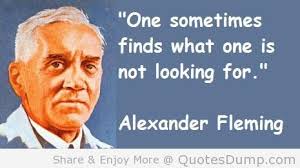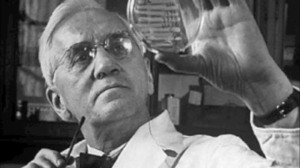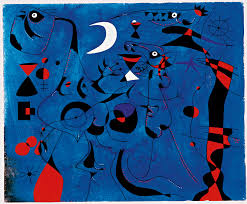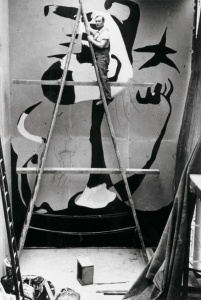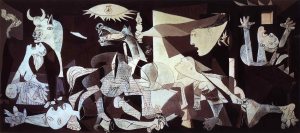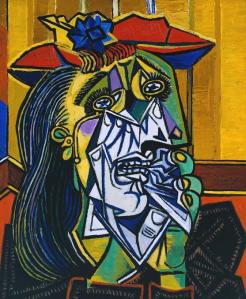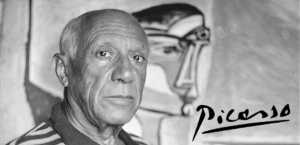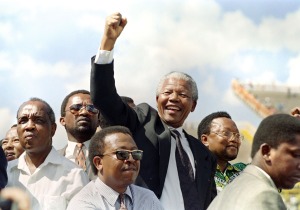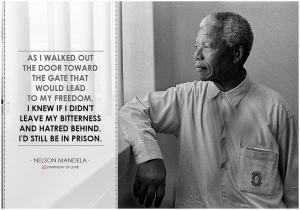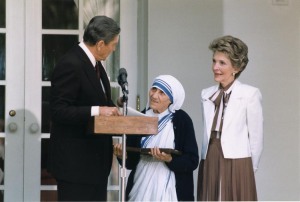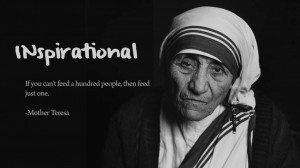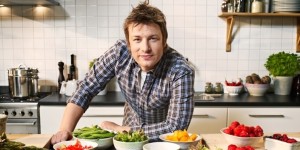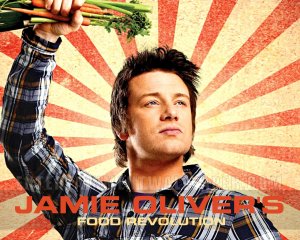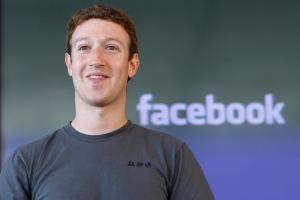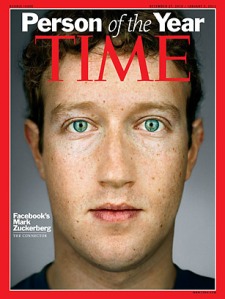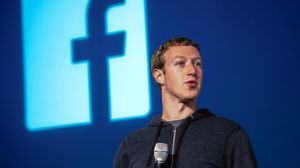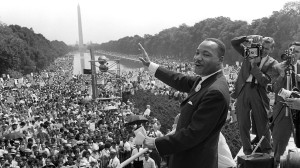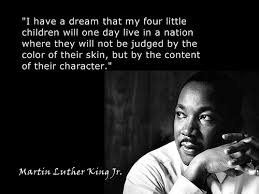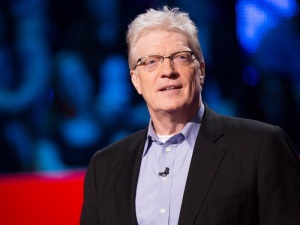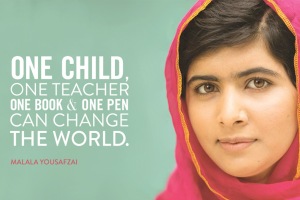
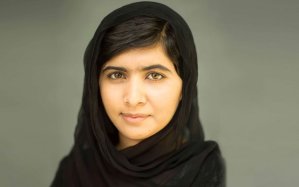
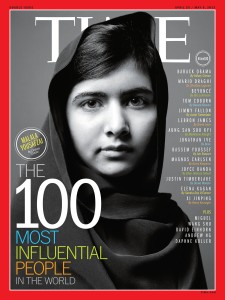
Biography 1:
Malala Yousafzai (born July 12, 1997) is a Pakistani student and education activist. She is known for her activism for girls’ and women’s rights, especially for being allowed to go to school. Yousafzai is originally from the town of Mingora in the Swat District. She was a victim of a gunshot attack in October 2012. Yousafzai is the youngest person to have won the Nobel Peace Prize. She won the prize in October 2014. She was 17.
In 2009, at age 11, many people got to know her through a weblog of the BBC News’ Urdu language service. The BBC published translated writings about her life under Taliban rule. On 9 October 2012, Yousafzai was shot in the head and neck in an assassination attempt by Atta Ullah Khan, a Taliban gunman.
She was given emergency treatment in Pakistan and then moved to England for more medical treatment.
On 3 January 2013, Yousafzai was discharged from the Queen Elizabeth Hospital in Birmingham to continue to recover at her family’s temporary home in the West Midlands. She had two five-hour long operations on 2 February 2013. She had a titanium plate put over the hole in her skull and a cochlear implant so she could hear again.
In May 2012 David Trumble, an award-winning artist, made a cartoon of Yousafzai as a Disney princess as part of a drawing of other feminist icons that he had made into princesses that was in the Huffington Post.
On 12 July 2013, at age 16, she made a speech at headquarters of the United Nations, stressing the right to education for all and for human rights and peace and non-violence against terrorism and intolerance citing the proverb: «the pen is mightier than the sword».
She was nominated for the 2013 Nobel Peace Prize. She has won a lot of prizes. She is the 2013 recipient of the Sakharov Prize. She was one of the winners of Glamour magazine’s Women of the Year. Lady Gaga, who was also a winner and was on the month’s cover, said that Yousafazi should have been on November’s cover of Glamour instead of her.
On October she met President Obama, Michelle Obama, and their daughter Malia in the Oval Office.
The Taliban have said that they still want to assassinate Yousafzai.
In October 2013 a book about her life I am Malala: The Girl Who Stood Up for Education and Was Shot by the Taliban was published, with her help. The book was banned in Pakistani private schools.
On 27 November 2013 Yousafazi was given the GG2 Hammer Award at the GG2 (Garavi Gujarat2) Leadership Awards 2013.
Yousafazi was chosen by TIME magazine as a candidate for 2013’s Person of the Year.
She was nominated for the World’s Children’s Prize for the Rights of the Child in 2014.
Biography 2:
Children’s Activist, Women’s Rights Activist (1997–)
QUICK FACTS
NAME Malala Yousafzai
OCCUPATION Children’s Activist, Women’s Rights Activist
BIRTH DATE July 12, 1997 (age 17)
PLACE OF BIRTH Mingora, Pakistan
AKA Gul Makai
FULL NAME Malala Yousafzai
ZODIAC SIGN Cancer
As a young girl, Malala Yousafzai defied the Taliban in Pakistan and demanded that girls be allowed to receive an education. She was shot in the head by a Taliban gunman in 2012, but survived.
QUOTES
“If I win Nobel Peace Prize, it would be a great opportunity for me, but if I don’t get it, it’s not important because my goal is not to get Nobel Peace Prize, my goal is to get peace and my goal is to see the education of every child.”
—Malala Yousafzai
Synopsis
Malala Yousafzai was born on July 12, 1997, in Mingora, Pakistan. As a child, she became an advocate for girls’ education, which resulted in the Taliban issuing a death threat against her. On October 9, 2012, a gunman shot Malala when she was traveling home from school. She survived, and has continued to speak out on the importance of education. She was nominated for a Nobel Peace Prize in 2013. In 2014, she was nominated again and won, becoming the youngest person to receive the Nobel Peace Prize.
Early Life
On July 12, 1997, Malala Yousafzai was born in Mingora, Pakistan, located in the country’s Swat Valley. For the first few years of her life, her hometown remained a popular tourist spot that was known for its summer festivals. However, the area began to change as the Taliban tried to take control.
Initial Activism
Yousafzai attended a school that her father, Ziauddin Yousafzai, had founded. After the Taliban began attacking girls’ schools in Swat, Malala gave a speech in Peshawar, Pakistan, in September 2008. The title of her talk was, «How dare the Taliban take away my basic right to education?»
In early 2009, Yousafzai began blogging for the BBC about living under the Taliban’s threats to deny her an education. In order to hide her identity, she used the name Gul Makai. However, she was revealed to be the BBC blogger in December of that year.
With a growing public platform, Yousafzai continued to speak out about her right, and the right of all women, to an education. Her activism resulted in a nomination for the International Children’s Peace Prize in 2011. That same year, she was awarded Pakistan’s National Youth Peace Prize.
Targeted by the Taliban
When she was 14, Malala and her family learned that the Taliban had issued a death threat against her. Though Malala was frightened for the safety of her father—an anti-Taliban activist—she and her family initially felt that the fundamentalist group would not actually harm a child.
On October 9, 2012, on her way home from school, a man boarded the bus Malala was riding in and demanded to know which girl was Malala. When her friends looked toward Malala, her location was given away. The gunman fired at her, hitting Malala in the left side of her head; the bullet then traveled down her neck. Two other girls were also injured in the attack.
The shooting left Malala in critical condition, so she was flown to a military hospital in Peshawar. A portion of her skull was removed to treat her swelling brain. To receive further care, she was transferred to Birmingham, England.
After the Attack
Once she was in the United Kingdom, Yousafzai was taken out of a medically induced coma. Though she would require multiple surgeries—including repair of a facial nerve to fix the paralyzed left side of her face—she had suffered no major brain damage. In March 2013, she was able to begin attending school in Birmingham.
The shooting resulted in a massive outpouring of support for Yousafzai, which continued during her recovery. She gave a speech at the United Nations on her 16th birthday, in 2013. She has also written an autobiography, I Am Malala: The Girl Who Stood Up for Education and Was Shot by the Taliban, which was released in October 2013. Unfortunately, the Taliban still considers Yousafzai a target.
Despite the Taliban’s threats, Yousafzai remains a staunch advocate for the power of education. On October 10, 2013, in acknowledgement of her work, the European Parliament awarded Yousafzai the Sakharov Prize for Freedom of Thought. That same year, she was nominated for a Nobel Peace Prize. She didn’t win the prize, but was named a nominee again in March 2014. In August of the same year, Leanin.Org held a live chat on Facebook with Sheryl Sandberg and Yousafzai about the importance of education for girls around the world. She talked about her story, her inspiration and family, her plans for the future and advocacy, and she answered a variety of inquiries from the social network’s users.
In October 2014, Yousafzai received the Nobel Peace Prize, along with Indian children’s rights activist Kailash Satyarthi. At age 17, she became the youngest person to receive the Nobel Peace Prize. In congratulating Yousafzai, Pakistani Prime Minister Nawaz Sharif said: “She is (the) pride of Pakistan, she has made her countrymen proud. Her achievement is unparalleled and unequaled. Girls and boys of the world should take lead from her struggle and commitment.» U.N. Secretary-General Ban Ki-moon described her as «a brave and gentle advocate of peace who through the simple act of going to school became a global teacher.”
Biography 3:
Malala Yousafzai is a Pakistani school pupil and spokesperson for women’s right to education. In retaliation for her high profile campaign for education and criticism of the Taliban, she was shot in the head at close range by a Taliban gunman. She survived the gunshot wound and has become a leading spokesperson for human rights, education and women’s rights. She has received numerous peace awards, and received the Nobel Peace Prize in 2014 along with Kailash Satyarthi, an Indian children’s rights activist.
Early Life Malala
Malala was born (12 July 1997) in Mingora, the Swat District of north west Pakistan to a Sunni Muslim family. She was named Malala, which means ‘grief stricken’ after a famous female Pashun poet and warrior from Afghanistan.
Her father, Ziauddin Yousafzai is a poet, and runs a chain of public schools. He is a leading educational advocate himself. In 2009, she began writing an anonymous blog for the BBC expressing her views on education and life under the threat of the Taliban taking over her valley. It was her father who suggested his own daughter to the BBC. She wrote under the byline “Gul Makai”
During this period, the Taliban’s military hold on the area intensified. At times, Malala reported hearing artillery from the advancing Taliban forces. As the Taliban took control of the area they issued edicts banning television, banning music, and banning women from going shopping and limiting women’s education. Many girls schools were blown up and as a consequence pupils stayed at home, scared of possible reprisals from the Taliban. However, for a time, there was a brief respite when the Taliban stated girls could receive primary education, if they wore Burkhas. But, a climate of fear prevailed and Malala and her father began to receive death threats for their outspoken views. As a consequence, Malala and her father began to fear for their safety. Her father once considered moving Malala outside of Swat to a boarding school, but Malala didn’t want to move.
” I don’t know why, but hearing I was being targeted did not worry me. It seemed to me that everybody knows they will die one day.” I am Malala p.188
When her father suggested they stop their campaigns for human rights, Malala replied
“How can we do that? You were the one who said that if we believe in something greater than our lives, then our voices will only multiply ever if we are dead. We can’t disown our campaign!’ I am Malala p.188
People were asking me to speak at events. How could I refuse saying there was a security problem? We couldn’t do that, especially not as proud Pashtuns. My father always said that heroism is in the Pastun DNA. I am Malala p.180
After the BBC blog ended, Malala featured in a documentary made by New York Times reporter Adam B.Ellick. She also received greater international coverage and her identity about writing the BBC blog was revealed. In 2011, she received Pakistan’s first National Youth Peace Prize and she was nominated by Archbishop Desmond Tutu for the International Children’s Peace Prize. Her increased profile and strident criticism of the Taliban caused Taliban leaders to meet, and in 2012, they voted to kill her.
On 9 October, 2012, a masked gunman entered her school bus and asked “Which one of you is Malala? Speak up, otherwise I will shoot at you all.”
Malala was identified and she was shot with a single bullet which went through her head, neck and shoulder. Two other girls were also injured, though not as badly as Malala.
Malala survived the initial shooting, but was in a critical condition. Her father was convinced she would die and told the village to prepare for her funeral. Her critical organs were failing and she developed an infection. In a coma, she was moved to a hospital in Rwalpindi. Later on the 15 October she was moved to Birmingham in the United Kingdom for further treatment at a specialist hospital for treating military injuries. A couple of days later, she came out of a coma and responded well to treatment. She was discharged on January 3, 2013 and moved with her family to a temporary home in the West Midlands. Writing in her book “I am Malala” she writes.
“It was a miracle I was alive” (p.237)
She also writes about her lack of bitterness or desire for revenge.
“My only regret was that I hadn’t had a chance to speak to them before they shot me. Now they’d never hear what I had to say. I didn’t even think a single bad thought about the man who shot me – I had no thoughts of revenge – I just wanted to go back to Swat. I wanted to go home” I am Malala p.237
Her assassination received worldwide condemnation and protests across Pakistan. Over 2 million people signed the Right to Education campaign. The petition helped the ratification of Pakistan’s first right to education bill in Pakistan.
Ehsanullah Ehsan, chief spokesman for the Pakistani Taliban, claimed responsibility for the attack, saying that Yousafzai was a symbol of the infidels and obscenity. However, other Islamic clerics in Pakistan issued a fatwa against the Taliban leaders and said there was no religious justification for shooting a schoolgirl.
On 15 October, UN Special Envoy for global education, Gordon Brown, visited Malala whilst she was in hospital and launched a petition in her name – ‘In support for what Malala fought for.’
Using the slogan “I am Malala” the petition contains three demands
- We call on Pakistan to agree to a plan to deliver education for every child.
- We call on all countries to outlaw discrimination against girls.
- We call on international organizations to ensure the world’s 61 million out-of-school children are in education by the end of 2015.
I am Malala – petition
On 12 July 2013, she spoke at the United Nations to a group of 500 youths calling for worldwide access to education.
“I am not against anyone, neither am I here to speak in terms of personal revenge against the Taliban or any other terrorist group. I’m here to speak up for the right of education for every child. I want education for the sons and daughters of the Taliban and all terrorists and extremists.”
Her global fame and admiration in the West has caused something of a backlash in Pakistan. Many in Pakistan fear the West’s support of Malala is hypocritical given the US drone strikes on Pakistan and Afghanistan. Also, her plight highlights the unchecked militancy of the Taliban, which is a problem for Pakistan. Some in Pakistan fear Malala is promoting a Western agenda. However, on her part, Malala is dismayed by conspiracy theories in her own country and is keen to portray her native Pakistan in a good light. Her BBC blog expresses such a sentiment.
…I immediately saw images of Pakistanis fill my screen. Not the usual rock hurling Pakistanis, irrationally shouting amidst flaming tyres, but gentle candle-lighting, beautiful Pakistanis with words of love and peace on their lips. It was UN International day of the Girl Child and the BBC chose to illustrate this with a story of what they termed a National Awakening in Pakistan, following the shooting of 14-year-old school girl, Malala Yousafzai. I was delighted at the apparent 24 hour flip from a narrative of “those Pakistanis are so barbaric they shoot their own school girls” to one of hope, resilience, and a more accurate reflection of the millions who reject such an act. (5 February, 2013)
“Today we all know education is our basic right. Not just in the West; Islam too has given us this right. Islam says every girl and everybody should go to school. In the Quran it is written, God wants us to have knowledge.” I am Malala p.263
“One child, one teacher, one pen and one book can change the world. Education is the only solution. Education first.”
– UN Speech, July 12, 2013
“I love my God. I thank my Allah. I talk to him all day. He is the greatest. By giving me this height to reach people, he has also given me great responsibilities. Peace in every home, every street, every village, every country – this is my dream. Education for every boy and every girl in the world. To sit down on a chair and read my books with all my friends at school is my right right. To see each and every human being with a smile of happiness is my wish. I am Malala p 265
“I am Malala, My world has changed by I have not.” p.265
In October, 2014, the Nobel committee awarded Malala the Nobel Peace Prize, the said:
“Despite her youth, Malala Yousafzai has already fought for several years for the right of girls to education, and has shown by example that children and young people, too, can contribute to improving their own situations.
“This she has done under the most dangerous circumstances. Through her heroic struggle she has become a leading spokesperson for girls’ rights to education.”
In 2014 Yousafazi has won Nobel Peace Prize and will be given a Doctor of Civil Law degree by the University of King’s College.

